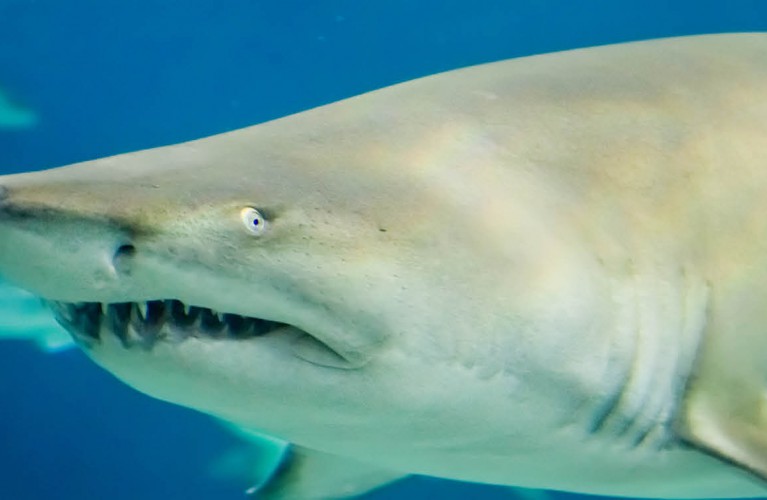
This type of shark has a gray-beige coloration, often characterized by brown spots. The skin is not covered with flakes, but is made up of dermal denticles, which make it similar to sandpaper . The bull shark reaches a maximum length of 3 meters and 20 cm and is therefore considered the largest shark in Italy . Its mouth, almost always half open, has long and thin teeth. He lives near the coast, in shallow water. In the Mediterranean it is reported everywhere, especially in Sicily.
The difference between males and females is very evident: the males have two rolled fins, present in the ventral area behind the pelvic fins, which correspond to the genital organs, the pterygopods. Unlike bone fish, the shark has developed a large liver rich in oil, ensuring greater buoyancy. Their peculiar characteristic is the ability to perceive electric fields, thanks to Lorenzini's Ampullae, tiny holes, visible to the naked eye. The ampoules, filled with a conductive jelly, allow sharks to distinguish electric and magnetic fields.
Shark teeth are, in general, compressed, triangular, with one or more cusps and with sharp, smooth or serrated edges. Without root, they are not inserted in the alveoli of the jaws, but are simply fixed in the connective tissue of the gum. They are arranged in various rows, the first of which is functional, while the others are growing; their training process is continuous. A row can be replaced in 2-3 weeks; each tooth can last about 1 year.
Contrary to popular belief, all sharks have a well-developed view. The eyes are complex and highly evolved tools. Their pupil can shrink or widen, adjusting the amount of incoming light; in the retina there are both rods (cells for vision in penumbra) and cones (cells that allow to distinguish colors), the distribution of these cells varies according to the sharks and their habits.